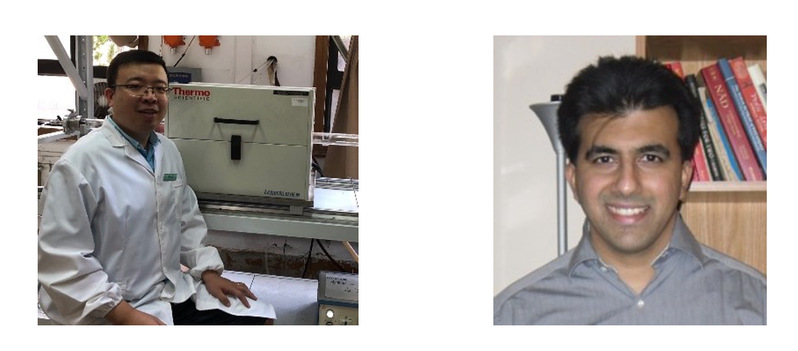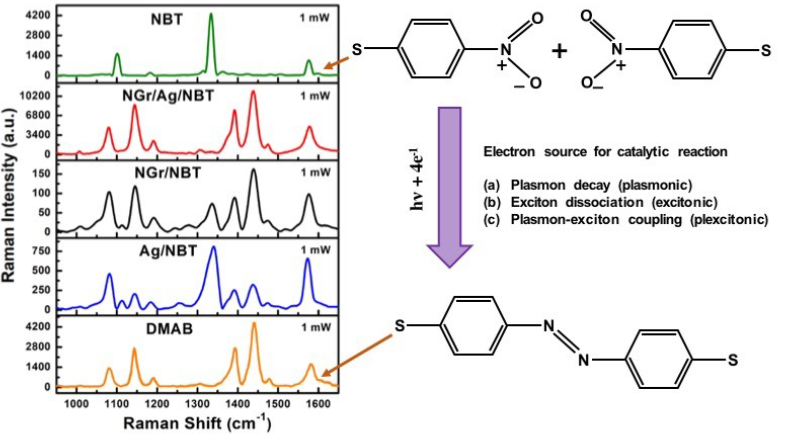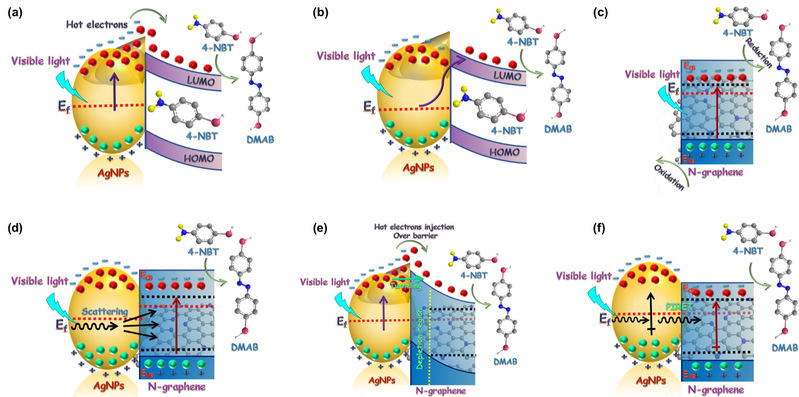Yenan Song, the associate research fellow from the team of Prof. Zhuo Sun of school of physics and electronic science, and Prof. Karthik Shankar from the University of Alberta, Canada, jointly published a paper entitled “CVD Grown Nitrogen Doped Graphene is an Exceptional Visible-Light Driven Photocatalyst for Surface Catalytic Reactions" in 《2D Materials》. Yenan Song and Karthik Shankar are all corresponding authors. They explored the photocatalytic potential of large area CVD grown nitrogen doped graphene (NGr) though the surface catalytic chemical transformation of 4-nitrobenzene thiol into p,p-dimercaptoazobenzene. This work is the first cooperative paper after the establishment of East China Normal University-University of Alberta Joint Institute of Advanced Science and Technology.

Yenan Song and Karthik Shankar
The photocatalytic potential of large area CVD grown nitrogen doped graphene (NGr) has been explored though the surface catalytic chemical transformation of 4-nitrobenzene thiol into p,p’-dimercaptoazobenzene. Decoration of NGr with Ag nanocubes with rounded edges to form NGr/Ag nanohybrids resulted in a slight increase in the work-function and a decrease in the n-type character of NGr due to ground state transfer of negative charge from NGr to Ag. The Ag nanocubes exhibited a localized surface plasmon resonance (LSPR) at ~425 nm. When the NGr/Ag nanohybrids were illuminated with visible light of wavelength close to the LSPR peak, KPFM indicated a dramatic change in surface potential of −225 mV and Raman spectra detected electron accumulation in NGr, which are attributed to a high local field enhancement-mediated hot electron injection into NGr and the formation of long-lived charge separated states. Pristine nitrogen doped graphene and its coupled system with plasmonic Ag nanoparticles showed superior photocatalytic performance compared to bare plasmonic Ag catalyst. While standalone Ag NPs were unable to complete the transformation of 4-NBT into DMAB even at a laser power of 10 mW, NGr/Ag nanohybrids completed this transformation at a laser power of 1 mW, pointing to the high photoreduction strength of NGr/Ag. Density functional theory (DFT) based computational modeling was used to examine the electronic structure of graphene doped with graphitic, pyrrolic and pyridinic nitrogen dopant atoms. DFT results indicated a stronger localization of charge at the dopant sites and a pronounced difference in the projected density of states (pDOS) for carbon atoms in proximity to, and distant from, the nitrogen dopant sites.

Left panel: Comparative performance for the Raman surface catalytic reduction of 4-NBT (4-nitrobenzenethiol) to DMAB (p, p'-dimercaptoazobenzene); from top, Raman spectrum of 4-NBT (green), 4-NBT on NGr/Ag hybrid (red), 4-NBT on pristine NGr (black), 4-NBT on pristine Ag nanoparticles (blue) and DMAB (orange). Laser wavelength was 532 nm at 1 mW power. Right panel: Chemical structure of 4-NBT and DMAB; Electron source for the 4-NBT dimerization in three different prototypical systems.
The surface-catalyzed single-electron reduction of 4-NBMT to DMAB was used to probe the photocatalytic activity of NGr, Ag and Ngr/Ag substrates. Both the bare NGr-based excitonic photocatalyst and the plexcitonic NGr/Ag hybrid photocatalysts showed much stronger activities for the transformation of 4-NBT to DMAB in comparison to bare Ag-based plasmonic photocatalyst. The NGr/Ag hybrid system has great potential in photocatalysis as evidenced by its highest performance. Exciton-plasmon interaction leads to a synergistic enhancement of surface photocatalytic activity in the NGr/Ag plexcitonic photocatalyst. FDTD simulation results showed a sizeable electric field enhancement in the vicinity of NGr-Ag interface. Raman spectroscopic results indicated a higher charge concentration in NGr/Ag system under illumination of light. This phenomenon was in good agreement with the observations from KPFM, that showed large surface potential reduction under light compared to in dark condition. The enhanced charge carrier concentration in NGr/Ag plexcitonic system holds immense potential for other photocatalytic applications.

Photocatalytic reduction mechanisms for various systems.

